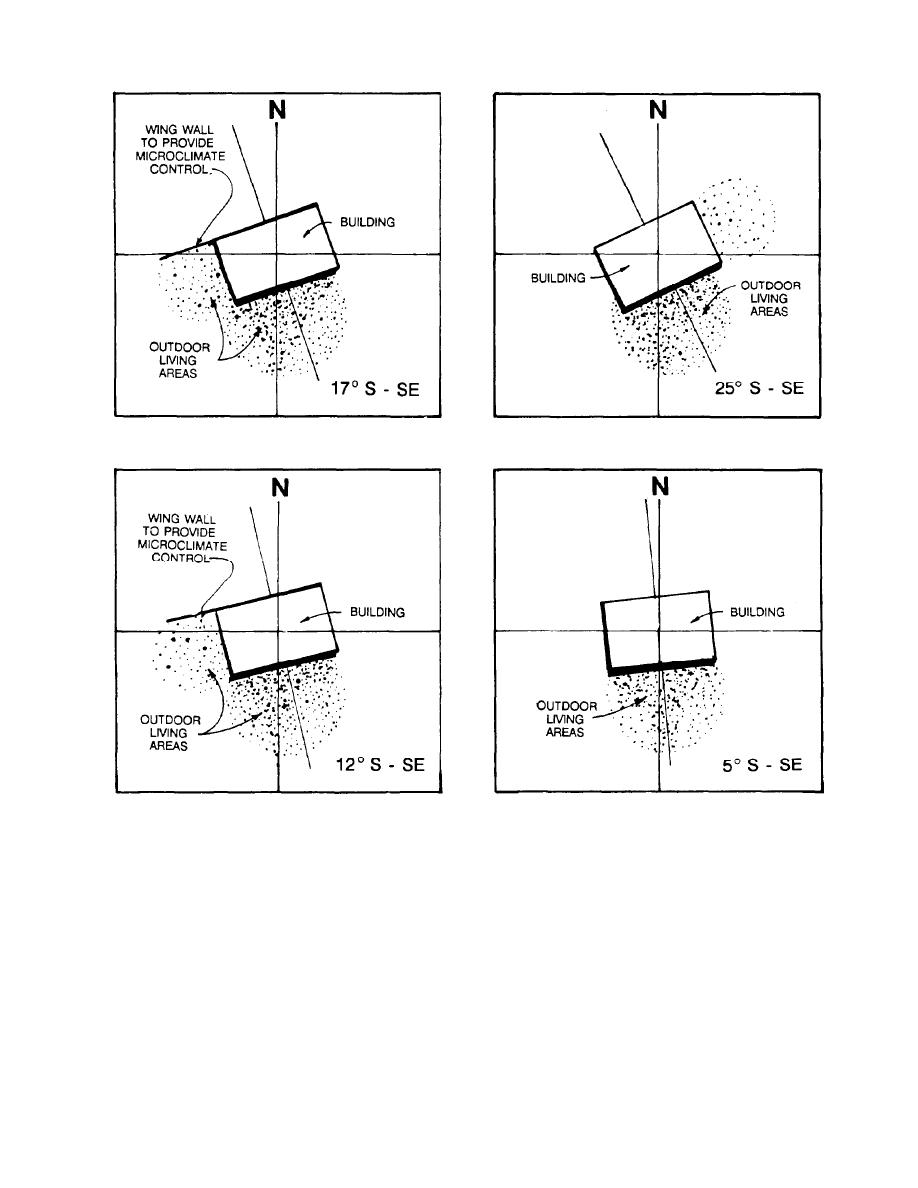
TM 5-803-14
TEMPERATE REGION
HOT ARID REGION
COOL REGION
HOT HUMID REGION
Figure 4-3. Orientation of Building Ares.
a. Vehicular Circulation. Because of their size
Drives may be added to the site if the daily traffic
and type of movement, vehicular routes should be
volume exceeds 5,000 vehicles per day (both direc-
established first. The following factors should be
tions.) Drives may be added if traffic using one
considered.
drive would exceed the capacity of a stop-sign-
(1) Access. Access should be controlled to min-
controlled intersection during the peak (highest)
imize the conflicts between through traffic and
traffic hour. Access should reduce conflict by pre-
vehicles entering and exiting the site. Access from
venting certain maneuvers (e.g., left turns.) Access
the through access road should separate conflict
should remove turning vehicles from through traf-
areas by reducing the number of access drives
fic by providing separate paths and storage areas
and/or increasing the space between drives and
for turning vehicles. Access should provide the
between drives and roadway intersections. The
following:
number of drives should be limited to a two-way
(a) Physical and sight distances which allow
drive or a pair of one-way drives for each site.
safe entry and exit from the access road.
4-4



 Previous Page
Previous Page
